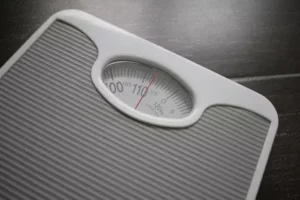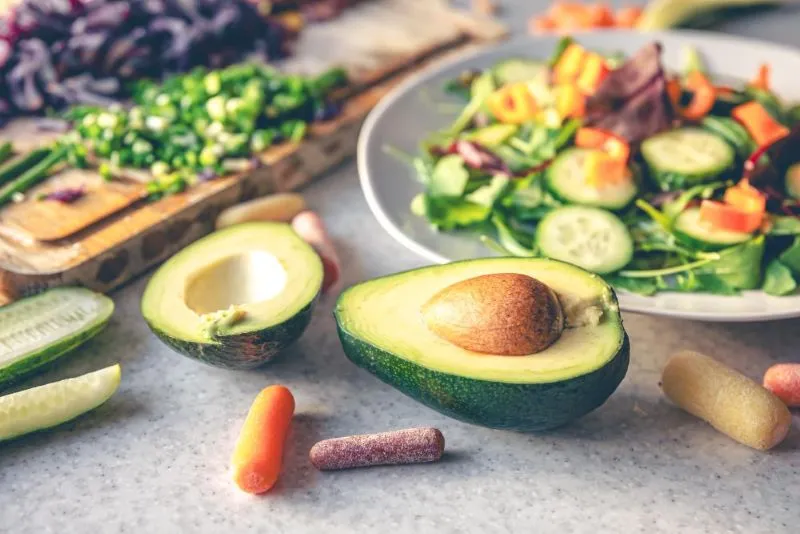Introduction
You’ve committed to the ketogenic diet, maybe after reading about its fast weight loss benefits. But now, headaches, fatigue, and relentless cravings are making you question everything. Sound familiar?
The keto diet—a low-carb, high-fat eating plan—forces your body to burn fat instead of glucose. While effective for weight loss (as explained in How Fast Can You Lose Weight on a Ketogenic Diet?), the transition isn’t always smooth. This guide dives deep into managing side effects and challenges on the ketogenic diet, offering actionable fixes backed by research, real-life case studies, and expert advice.
Let’s turn those keto struggles into wins.
1. The Keto Flu: Your Body’s First Rebellion
What Is Keto Flu?
When you slash carbs, your body panics. Keto flu—a cluster of symptoms like headaches, fatigue, and brain fog—strikes 25-50% of keto newbies, according to a 2019 NIH study.
Why it happens:
- Electrolyte depletion: Low insulin levels trigger sodium and potassium loss.
- Carb withdrawal: Your brain misses its glucose fix.
How to Beat Keto Flu
| Symptom | Fix |
|---|---|
| Fatigue | 5,000 mg sodium daily (bone broth, salt) |
| Headaches | 300-400 mg magnesium glycinate |
| Brain fog | MCT oil (boosts ketone production) |
Pro Tips:
- Sip pickle juice for instant sodium.
- Try Keto Diet Essentials for supplement recommendations.
Case Study: Sarah, 34, crushed keto flu in 4 days by adding ½ tsp Himalayan salt to her morning water.
2. Electrolyte Imbalance: The Silent Saboteur
Why Electrolytes Matter
Electrolytes (sodium, potassium, magnesium) regulate nerves, muscles, and hydration. On keto, you lose them fast—leading to cramps, dizziness, or even heart palpitations.
Top Food Sources:
- Sodium: Bone broth, olives, pickles.
- Potassium: Avocado (485 mg per ½ fruit), spinach.
- Magnesium: Pumpkin seeds, dark chocolate (70%+).
Recipe: Keto Electrolyte Lemonade
- 1 cup water
- ¼ tsp salt
- ½ lemon (squeezed)
- 1 tsp sugar-free sweetener
Expert Quote:
“Electrolyte imbalances are the #1 reason people quit keto. Prioritize sodium intake early.” — Dr. Ken Berry, author of Lies My Doctor Told Me.
3. Keto Constipation: Getting Things Moving
Causes
- Low fiber intake: Many keto foods lack fiber.
- Dehydration: Ketosis increases water loss.
Solutions:
- Fiber-Rich Keto Foods:
- Chia seeds (10g fiber per ounce)
- Broccoli (5g per cup)
- Hydration Hacks:
- Herbal teas (peppermint, ginger).
- Electrolyte mixes (link to Keto Diet Essentials).
Pro Tip: Add 1 tbsp MCT oil to coffee—it lubricates the gut!

Navigating Restaurants
4. Social Hurdles: Dining Out and Peer Pressure
Navigating Restaurants
Eating keto at restaurants isn’t Mission Impossible—it’s about strategy.
| Menu Item | Keto-Friendly Swap |
|---|---|
| Burger & Fries | Lettuce wrap + side salad (no croutons) |
| Pasta | Zoodles (zucchini noodles) + meat sauce |
| Margarita | Vodka soda with lime (skip the sugar!) |
Pro Tips:
- Ask for “no sauces” (many contain hidden sugars).
- Chain restaurants like Chipotle offer customizable keto bowls.
Case Study: Mike, 28, survived a business dinner by ordering grilled salmon + steamed veggies and discreetly avoiding the bread basket.
Handling Judgy Friends
“Why are you eating so much fat?!” Sound familiar? Arm yourself with replies:
- “I’m focusing on foods that keep me full and energized.”
- “This works for my goals right now—I’ll let you know how it goes!”
Social Proof: A 2021 Harvard study found that 68% of keto followers face skepticism initially but report improved confidence over time.
Internal Link: For motivation, read Tips and Success Stories on the Ketogenic Diet.
5. Weight Loss Plateaus: Why the Scale Stalls
Common Reasons
- Hidden carbs: “Keto-friendly” snacks often contain maltitol or tapioca starch.
- Metabolic adaptation: Your body becomes efficient at burning fat, slowing weight loss.
Breakthrough Strategies:
- Track Macros Relentlessly: Apps like Carb Manager expose sneaky carbs.
- Intermittent Fasting: Try 16:8 fasting to boost ketosis.
- Carb Cycling: Add 50g carbs 1-2 days/week to reset leptin levels (linked to hunger signals).
Data Insight:

Example: Rapid loss in weeks 1-3, plateau by week 6, then gradual loss.
Internal Link: Learn about Comparing the Ketogenic Diet with Other Fast Weight Loss Diets.
6. Keto Breath and Body Odor: The Awkward Phase
Why It Happens
When your body produces acetone (a type of ketone), it exits via breath, sweat, and urine. The result? A metallic or fruity odor.
Freshness Fixes:
- Sugar-free mints: Opt for xylitol-based (avoid maltitol).
- Parsley: Chew raw leaves—chlorophyll neutralizes odors.
- Hydration: Drink 3L water daily to flush ketones.
Expert Tip:
“Keto breath is temporary. Once your body adapts, it typically subsides in 2-3 weeks.” — Dr. Eric Westman, The Keto Cure.
7. Long-Term Challenges: Nutrient Deficiencies
Watch For These Deficiencies
| Nutrient | Symptoms of Deficiency | Top Keto Sources |
|---|---|---|
| Vitamin D | Fatigue, weak immunity | Fatty fish, egg yolks |
| Omega-3s | Dry skin, joint pain | Wild-caught salmon, walnuts |
| B Vitamins | Brain fog, anemia | Beef liver, spinach |
Prevention:
- Take a high-quality multivitamin (look for methylated B12).
- Eat organ meats 1-2x/month—they’re nature’s multivitamin.
Internal Link: Stock up using Keto Diet Essentials.
8. Cravings and Emotional Eating
Beat Sugar Cravings
- Salty/Fatty Snacks: Pork rinds, olives, or a spoonful of almond butter.
- Mindful Alternatives:
- Craving ice cream? Try keto chocolate avocado mousse.
- Missing bread? Bake 90-second keto bread.
Case Study: Lisa, 41, curbed her nightly sugar habit by drinking hibiscus tea with a dash of heavy cream.
Science Says: A 2020 study found that keto reduces ghrelin (the “hunger hormone”) by 14% within 3 weeks.
9. When to See a Doctor
Red Flags
- Severe heart palpitations: Could indicate electrolyte imbalance.
- Persistent fatigue: May signal thyroid issues or adrenal fatigue.
Contraindications:
Keto isn’t safe for everyone. Avoid if you have:
- Kidney disease
- Pancreatic insufficiency
- History of eating disorders
Expert Resource: The Academy of Nutrition and Dietetics advises consulting a healthcare provider before starting keto.
FAQs
Q: How long does keto flu last?
A: Typically 3-7 days. Hydration and electrolytes speed recovery.
Q: Can I drink alcohol on keto?
A: Yes—opt for dry wines, spirits, or hard seltzers. Avoid sugary mixers!
Q: Is keto safe long-term?
A: Research is mixed. Cycle keto with Mediterranean-style eating for balance (see Comparing the Ketogenic Diet with Other Diets).
Conclusion
Managing side effects and challenges on the ketogenic diet isn’t about perfection—it’s about preparation. From battling keto flu to silencing skeptics, you’ve now got the tools to thrive.
Next Steps:
- Download our free 7-day keto meal plan.
- Explore The History and Origins of the Ketogenic Diet to deepen your understanding.
Remember: Every keto struggle is a stepping stone. Stay curious, stay hydrated, and let your results speak for themselves. 🥑


